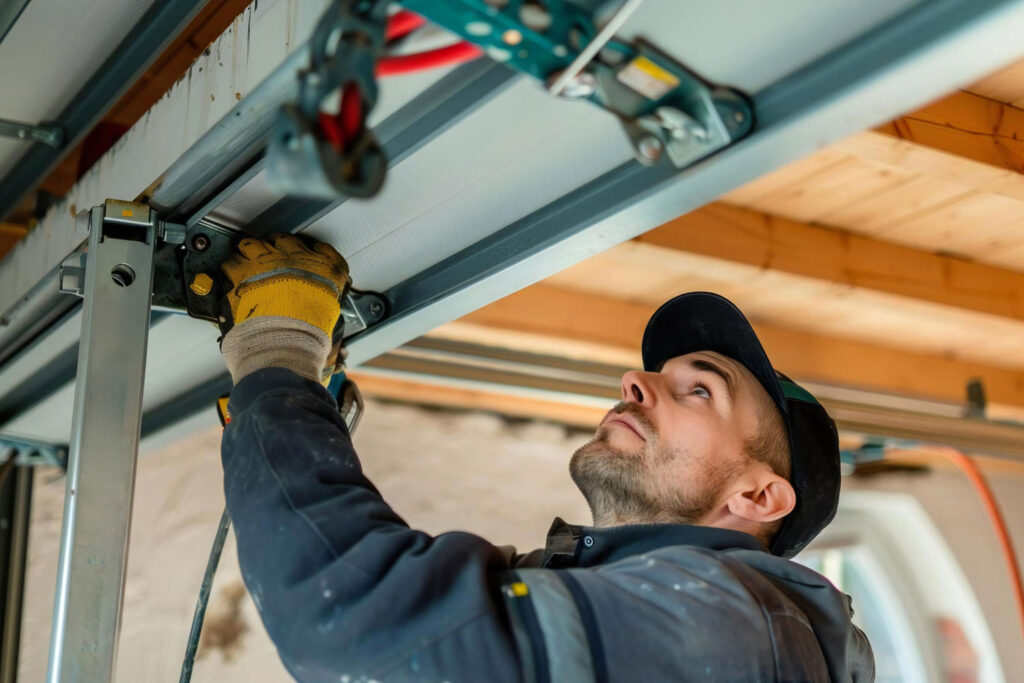Trustworthy Garage Door Service for Calibrations and Inspections
Trustworthy Garage Door Service for Calibrations and Inspections
Blog Article
Usual Garage Door Troubles and Exactly How to Take care of Them
Garage doors are necessary for both safety and benefit, yet they usually present a variety of typical problems that can annoy home owners. While some concerns may show up uncomplicated to solve, others might need a much more nuanced understanding of garage door mechanics.
Noisy Garage Door Operation
A noisy garage door operation can be a substantial resource of aggravation for property owners, usually indicating underlying mechanical problems. Such interruptions may come from different reasons, including worn-out rollers, loosened equipment, or insufficient lubrication. Determining the source of the noise is crucial for effective resolution.
Over time, these components can weaken, leading to grinding or squealing audios as the door actions. In addition, loose bolts or screws in the door mechanism can produce rattling audios throughout operation.
One more contributing aspect is inadequate lubrication of the door's relocating components. Applying a top notch lube to the tracks, springtimes, and rollers can substantially diminish friction and sound. Homeowners ought to execute this maintenance regularly to keep optimal performance.
Finally, the garage door opener might also create noise as a result of its age or mechanical issues. If the sound persists regardless of dealing with other elements, seeking advice from a specialist for a detailed inspection and prospective repair service might be essential.
Door Will Not Open or Shut
Experiencing a garage door that will not open or shut can be exceptionally frustrating and often indicates a breakdown within the system. A number of factors can add to this concern, and recognizing the origin is important for effective resolution.

Following, evaluate the security sensing units situated at the base of the door. These sensing units can become misaligned or obstructed by particles, stopping the door from operating appropriately. Tidy the sensors with a soft cloth and guarantee they are aligned.
Furthermore, the garage door's interior components must be assessed. Problems such as a busted springtime, worn-out rollers, or a damaged opener can hamper movement. If any type of parts appear to be damaged, it might be advisable to speak with a professional for repairs.
Misaligned Tracks
(Flexible Options)Misaligned tracks can seriously interrupt the smooth operation of a garage door, causing operational failings such as uneven movement or complete immobilization. This issue generally occurs as a result of a selection of elements, including wear and tear, unintentional influences, or Recommended Site inappropriate installation. When the tracks are misaligned, the rollers can not move openly, which not only stresses the electric motor but also positions safety risks.
To recognize imbalance, visually inspect the tracks for voids or irregular spacing. If you notice any kind of inconsistencies, it is crucial to address the problem promptly - garage door service. Begin by loosening up the screws that safeguard the track to the wall surface, permitting changes. Thoroughly touch the track back into its proper setting utilizing a rubber club or a similar tool, ensuring it is straight and level.
Normal upkeep, including cleaning the tracks and ensuring rollers are in excellent problem, can prevent future misalignments. By attending to misaligned tracks quickly, you can restore the performance of your garage door and improve its long life.
Broken Springs
Amongst the different parts of a garage door system, broken springtimes are just one of one of the most common issues that can substantially hamper its performance. Garage door springtimes are important for balancing the weight of the door, enabling smooth opening and closing. When a spring breaks, it can bring about a door that is difficult to operate or, in many cases, entirely unusable.
There are two main sorts of springs: torsion springtimes, which are mounted over the door, and extension springs, discovered on either side. Signs of a busted spring consist of a door that won't open up, a noticeable void in the spring, or a loud sound throughout procedure. Trying to operate a garage door with a broken spring can trigger additional damage to the door or the opener.
Fixing broken springtimes is not a do it yourself project; it calls for specialized tools and experience because of the high stress involved. It is recommended to consult a professional service technician who can securely change the springtimes and make certain the door is appropriately balanced. Routine maintenance and assessments can assist avoid springtime failings and extend the life expectancy of the garage door system.
Push-button Control Issues

If the remote still stops working to operate, check the garage door opener to make sure that its sensing units are tidy and unobstructed. Dust, debris, or misalignment may hinder the signal transmission between the remote and the opener.
Interference from other digital devices can also impede remote functionality. Make certain that nearby tools, such as cordless routers or cordless phones, are not triggering interruptions. garage door service. If interference is suspected, attempt moving these devices even more far from the garage door opener
In many cases, the remote might need to be reprogrammed. Consult the producer's guidelines to reset the remote control and integrate it with the garage door opener. If all else stops working and the remote remains to malfunction, consider consulting an expert specialist for a comprehensive inspection and potential substitute of the remote or opener.
Final Thought
(Trusted Experts)In recap, typical garage door troubles can substantially affect capability and safety and security. Addressing noisy procedure entails lubrication and tightening equipment, while problems with opening or closing call for inspection of source of power and sensors. Misaligned tracks can be treated through modification, although busted springs necessitate professional intervention. Push-button control malfunctions usually emerge from weak batteries or interference, which can be solved with replacement or reprogramming. Positive upkeep and timely fixings can guarantee optimum efficiency and longevity of garage doors.
Report this page